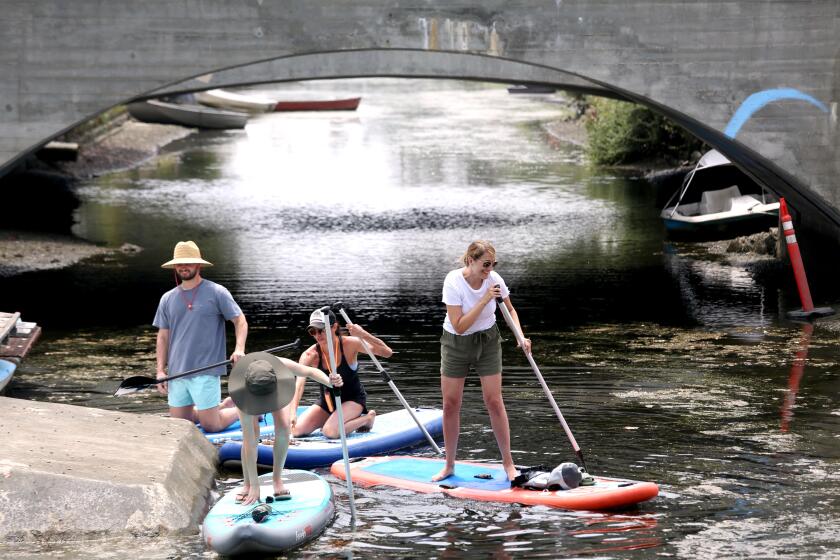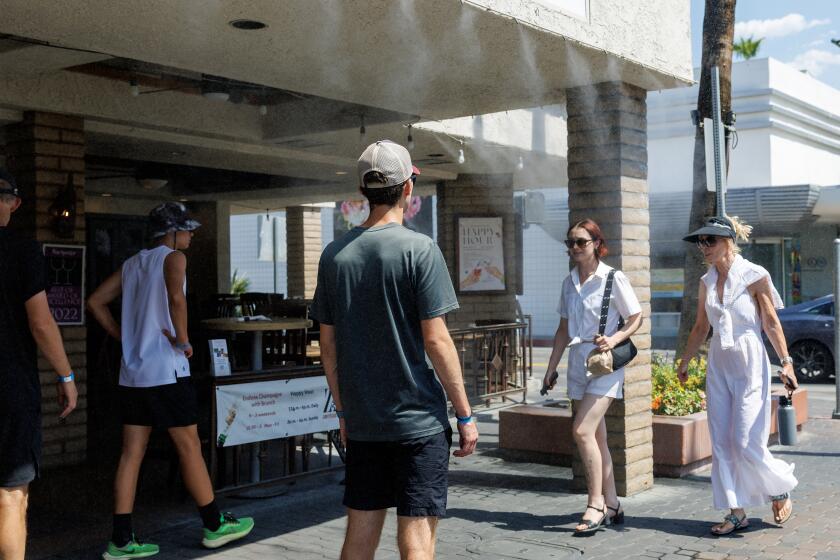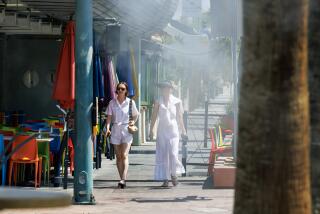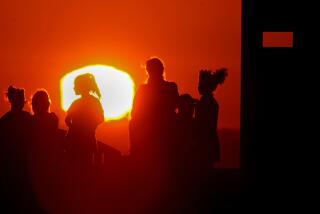‘Long-duration’ heat wave again cooking California, raising health and wildfire concerns
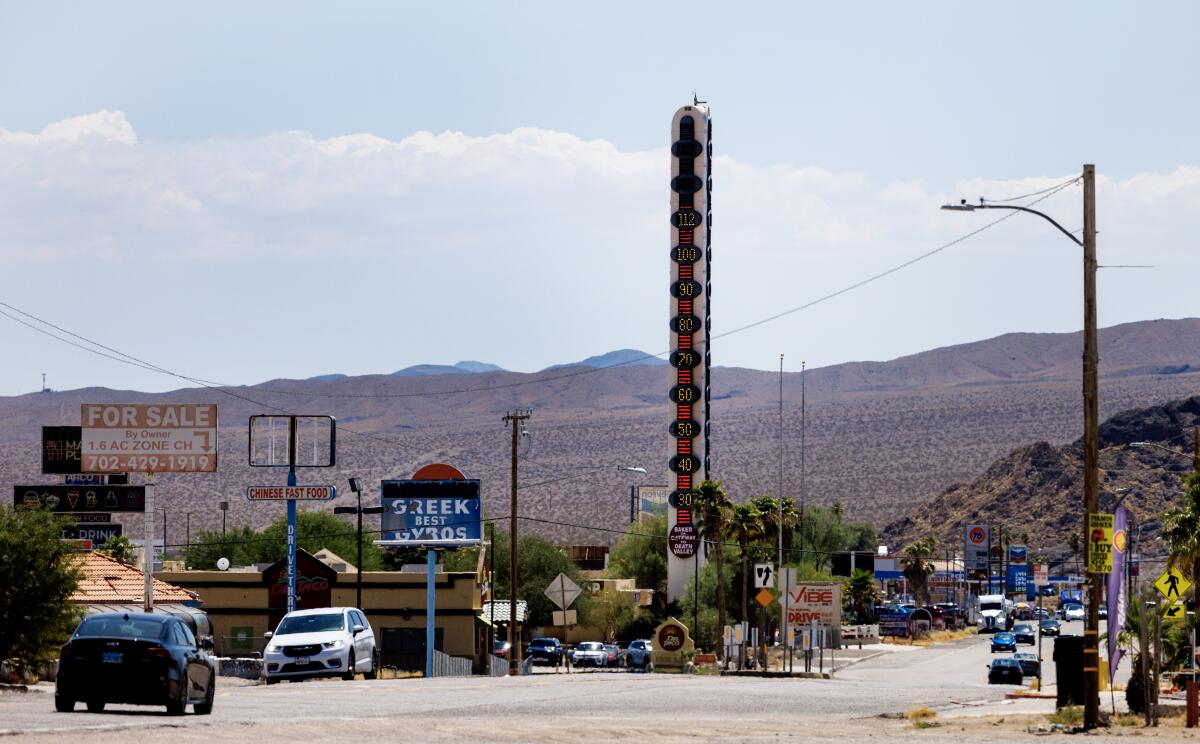
Another bout of prolonged heat has kicked off across California and much of the West, expected to again bring several days of triple-digit temperatures to most inland areas.
July’s second major heat wave isn’t forecast to be as extreme as the last event, which set several all-time records for high temperatures. Nevertheless, the National Weather Service predicted that it will be a “long-duration heat wave,” which creates uniquely dangerous conditions — especially when temperatures barely drop at night.
“Heat is cumulative over multiple days,” said David Gomberg, a meteorologist with the National Weather Service in Oxnard. “It starts to impact more people the longer the duration — and this has that going for it.”
The next few days of extreme heat could cap a potentially historic month when it comes to hot temperatures.
“Given what has already transpired, and the forecast for the next week or so, it’s quite likely that much of California and the Southwest will end up experiencing their hottest July on record,” UCLA climatologist Daniel Swain wrote in a blog post this weekend.
Several California communities near the Arizona border had the longest streak in the nation of days that hit 90 degrees or higher in 2022, according to new U.S. Census data.
Much of inland Southern California remains under an excessive heat warning through Thursday night, with highs forecast from 100 to 110 degrees and lows staying in the 70s and 80s, the warning said.
“There is a high risk for dangerous heat illness for anyone, especially for the very young, the very old, those without air conditioning, and those active outdoors,” the weather service warned.
Weather officials continue to urge residents across California’s interior to take the heat seriously, especially after the last heat wave was linked to several deaths across the region.
In Death Valley, temperatures may not drop below 100 degrees over the next three days, with daytime highs reaching up to 125 degrees, the National Weather Service said.
Influencing the heat this week will be some monsoonal moisture over the state’s mountains and deserts. That moisture could cause some thunderstorms through Wednesday, forecasters said.
“Afternoon high temperatures will feel more oppressive than experienced a few weeks ago due to the increase in humidity,” the weather service in Las Vegas warned.
This week’s excessive heat warning also covers much of the San Joaquin Valley through Wednesday night, as well as the Bay Area’s interior mountains; both regions are expected to see temperatures that easily surpass 100.
Here is a list of temperature records broken during this long-duration, extreme heat wave broiling California and the West.
A less severe but still dangerous heat advisory is also in effect through Wednesday across the Sacramento Valley and surrounding foothills, with highs expected to surpass 110 in some areas.
Most of the state’s coastline will see only minor temperature increases due to a persisting marine layer, weather service officials said.
Slight cooling is expected to begin Friday, continuing through the weekend, Gomberg said.
But with the majority of the state expecting severe heat, officials are also bracing for an increased threat for wildfires.
“We definitely have elevated fire concerns because the humidity is still fairly dry over a good part of our area,” Gomberg said. He said the low humidity along with the hot temperatures and some expected onshore winds could quickly spread any fire that’s sparked.
On Sunday, two fast-growing fires ignited in Riverside County, burning several buildings and forcing evacuations. Arson investigators were reportedly probing reports that one of the blazes, the Hawarden brush fire, was caused by children setting off fireworks.
More to Read
Sign up for Essential California
The most important California stories and recommendations in your inbox every morning.
You may occasionally receive promotional content from the Los Angeles Times.
